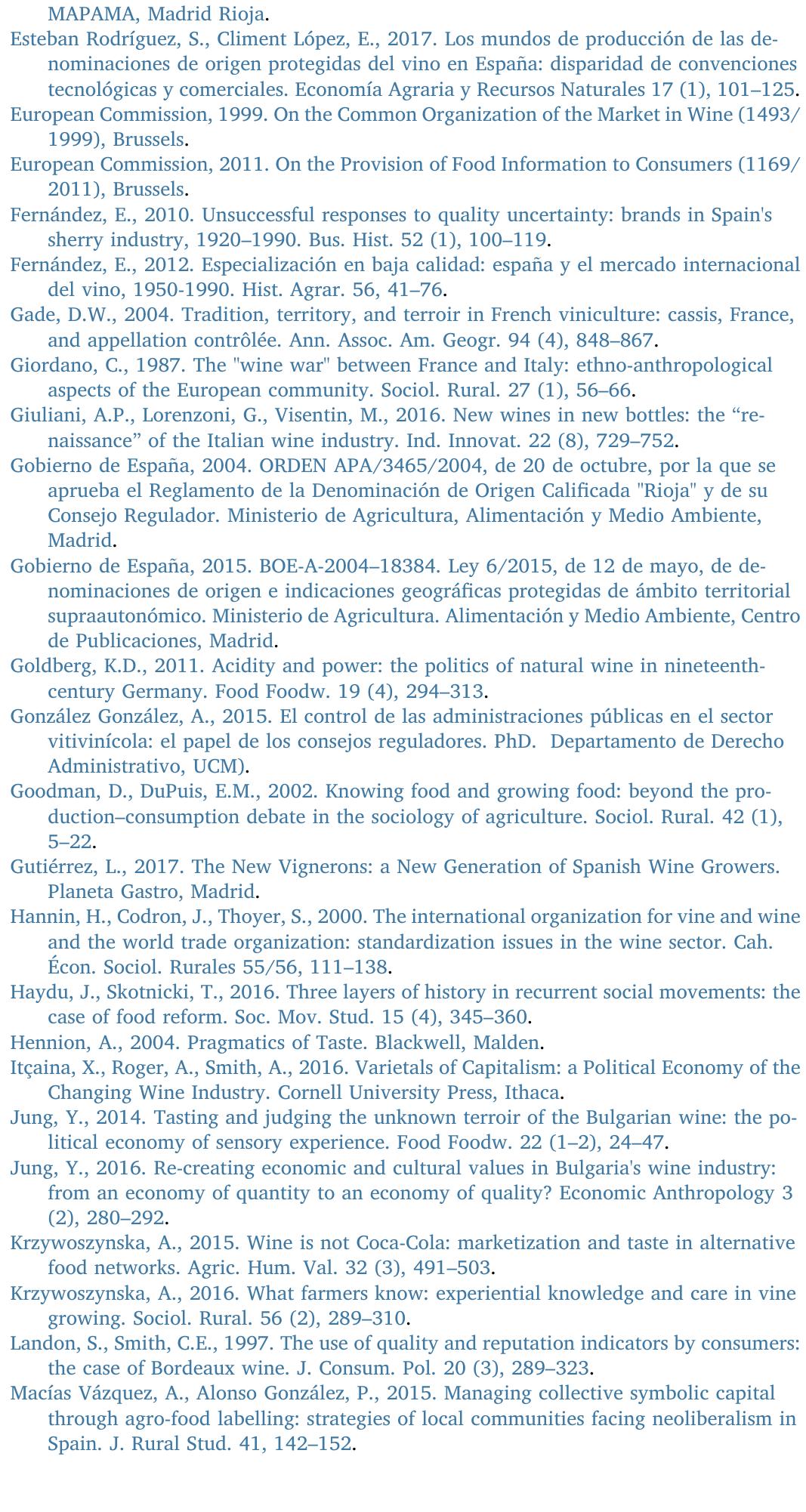Key research themes
1. How do economic policies and governance structures shape the European wine market's production and trade dynamics?
This research area investigates the influence of European Union (EU) policies, specifically the system of appellations (Geographical Indications, GIs) and related regulatory frameworks, on the organization of wine production, supply controls, and international trade. It explores how policy interventions affect market equilibrium, price formation, firm profitability, and international competitiveness amid structural reforms and globalization.
2. What are the key macroeconomic and climatic drivers influencing global and European Union wine production and trade patterns?
This theme encompasses analyses examining the effects of macroeconomic factors—such as monetary policy, labor, capital, and exchange rates—and environmental forces, notably climate change, on the spatial distribution, yield, and trade flows of wine production globally and within the EU. Research in this area focuses on modeling supply responses, productivity variations, and adaptation strategies in the context of shifting competitive positions between traditional and emerging wine-producing regions.
3. How do product characteristics and market perceptions influence wine pricing and consumer preferences in diverse wine markets?
This research examines determinants of wine prices and consumer valuation, focusing on intrinsic and extrinsic product attributes including closure type, regional identity, aging, and label information. Hedonic pricing models and consumer behaviour studies analyze how these factors serve as quality signals under uncertainty, affect willingness-to-pay, and guide market segmentation and positioning strategies. The theme also explores consumer preferences and their interdisciplinary foundations in various geographic contexts.








































































































